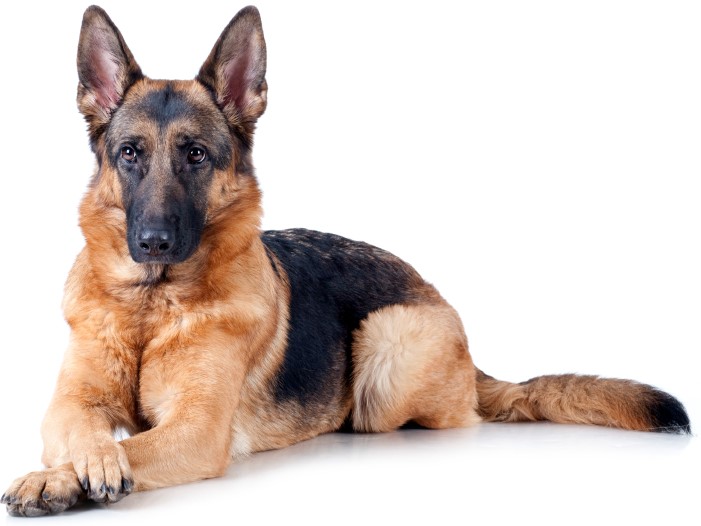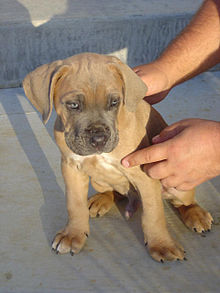Dog aggression is a tricky business. To begin with, dog aggression (aggression directed by dogs toward other dogs) and human aggression (aggression directed toward humans) are entirely separate behaviors. It’s very common for dogs to exhibit some degree of intolerance toward their fellow canines but show only trust and affection for humans. Second, dogs of any breed can be dog aggressive. We at PBRC have lost track of the number of times we have been approached by off-leash aggressive dogs while responsibly walking our leashed pit bulls. Finally, dog aggression is not a matter of simply being dog aggressive or not dog aggressive. As we point out in our Breed Info page, it’s more accurate to think of dog aggression as a spectrum. Some dogs are completely tolerant of other dogs, others are completely intolerant, but most are somewhere in between.

The matter becomes even more complicated with pit-bull-type dogs. While it’s true that fighting was a part of these breeds’ original purpose (part of, but not the only purpose), it is simply wrong to say that pit bulls are “fighting dogs.” Pit bulls are one of the most popular dogs in the United States, but very few of them are actually bred and trained for fighting. The vast majority of pit bulls are bred for family companionship, looks, or nothing in particular. A relative minority are “game bred.” And, as in the case of Michael Vick’s dogs, even pit bulls that have endured the horrors of the pit have proven docile toward other dogs and, most importantly, no worse for the wear in their trust and affection for humans.
As responsible pit bulls owners, we must understand and respect our breed’s heritage, just as Golden Retriever owners or Border Collie owners should respect their breed’s heritage. This means understanding that our beloved dogs may be intolerant of other dogs. At some point, they may even have to forego all interactions with other dogs. We see too many owners forced to rehome their dogs because they simply don’t understand dog-to-dog aggression issues. For this reason, we cannot underemphasize the consequences of misunderstanding dog aggression. Of course, dogs are individuals, and each situation is different, so our recommendations may not apply in all circumstances. Nevertheless, we encourage pit bull owners to follow the guidelines below.
Know Your Dog(s)
Is your dog confident and relaxed around other dogs, or is it insecure and defensive? Is your dog generally tolerant or intolerant toward other dogs? If you have a multi-dog household, are there particular situations that trigger aggression between your dogs (the doorbell, going in and out of the house, toys, food, rawhides, etc.)? Know what triggers aggression and avoid it.
Set Your Dog(s) Up to Succeed
Of course, the very best situation is to have a pit bull as your only pet. Pit bulls are people dogs, anyway. And if they receive enough attention from their family, they won’t need a canine companion to be happy. However, if you prefer having two dogs, and many people do, the next best situation is to have a compatible neutered male and a spayed female, whose interactions are always supervised. If you have multiple pit bulls, a pit bull in a multi-pet home, or more than one of any type of dog, you might find our Crate and Rotate page helpful.
There is a higher incidence of aggressive behavior between dogs of the same sex. Two males or two females will often view each other as rivals, even if they appear to get along most of the time. This is a fact for every breed. Have your dog(s) spayed or neutered as early as your veterinarian finds it appropriate.
Always be prepared. Like humans, dogs develop different personalities as they mature (at around 3 years of age). Most puppies are fine with other dogs; however, all dogs can become intolerant of other dogs as they mature, and pit bulls are no exception. This doesn’t mean that certain dogs could “snap” or “turn.” That’s a completely bogus idea perpetuated by the media. Aside from rare cases in which aggression is suddenly triggered by neurological or pathological disorders, there are always warning signs. Again, know your dog, and set it up to succeed!
Properly introduced, a neutered male and a spayed female with compatible personalities should be fine. They will, however, require strict supervision all their lives.
Train Your Dog
Using positive reinforcement, work on basic commands like sit, down, heel, and stay. Also, work hard on focus and attention. Getting your dog to direct its attention away from distractions and toward you is a foundation of good training.
Never Leave Your Dog Unsupervised With Other Animals
We can't emphasize this enough. If no one is around to keep an eye on them, dogs should be safely crated or in separate rooms, even if they are best friends. Dogs can fight for many reasons—status, food, toys, or rawhides—and if you’re not there to manage them, things could escalate. Your dog does not need “company” when home alone, and the routine of going into a crate every time you leave can be quite comforting for your dog. It also provides you with total piece of mind. There is no chance that your dogs will fight, and they won’t chew up your favorite pair of shoes!
Spay and Neuter
Have your dog(s) spayed or neutered as early as possible. Beyond the benefit of knowing that you will never contribute to pet overpopulation, intact dogs are more likely to show aggression toward other dogs. Females in their reproductive cycles and males that are triggered by sexual hormones tend to be far more reactive.
Monitor Playtime
Pit bulls live to play, and playtime between compatible dogs is a great form of exercise and socialization. But roughhousing can trigger a fight if not kept under control. Pit bulls are scrappy: they like to play rough and can be pretty vocal. Don’t let things go too far. As the leader of your pack, it’s your job to set limits and keep everyone under control.
Always Have Your Dog on a Leash When Walking
Regardless of what breed you own, this should go without saying. It’s a basic rule of dog ownership. If your dog is outside the house and not enclosed within a fenced area, keep him or her on a leash.
Do Not Bring Your Dog to an Off-Leash Dog Park
And avoid any other area where it may come into contact with other dogs running loose. For the reasons we list here, dog parks are poor choice for dogs of all breeds. Dog parks are frequently more about human entertainment than the well being of the dogs. Your dog can get just as much exercise and socialization on a leash.
Early Socialization May Help
But it’s no guarantee that your dog might not become dog aggressive at some point. If you already have a dog and you want to bring a pit bull into your home, your best bet is to adopt a mature dog whose personality is a known quantity.
"Post a comment to know More About Dogs"
 Shake is a fun trick that's fairly easy to train a dog to do. Most dogs learn this dog trick quickly. After just a few short training sessions your dog will be offering his paw for a shake every time he meets someone new!
Shake is a fun trick that's fairly easy to train a dog to do. Most dogs learn this dog trick quickly. After just a few short training sessions your dog will be offering his paw for a shake every time he meets someone new!





















